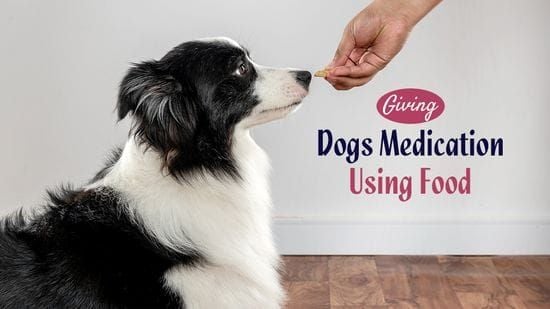Hiding Pet Medications Using Food
)
Administering medication to pets is often a challenging task for pet owners, but there are methods that can make the process smoother. Some pets readily take their medication, while others may avoid it entirely, making it important to find effective ways to get your pet to swallow their tablets or pills. The method used to hide pet medication plays a significant role in ensuring the medication's effectiveness. In this guide, we’ll explore strategies for hiding medications in food, discuss potential risks, and provide advice on keeping your pet’s health in check while managing their medications.
Understanding Medications and Food Compatibility
Pets, like humans, need medication to help manage various health conditions, from chronic diseases to infections. However, many pets are not fond of the taste or texture of their medication, making it a struggle to administer pills or liquid medicines. If the medication is not consumed properly, it can lose its effectiveness, leading to unnecessary health risks.
It is essential to know the right way to hide medication in food without altering the drug's function or causing harm to your pet. For example, certain medications require an empty stomach for proper absorption, while others may not interact well with certain foods. Therefore, always check with your vet before mixing medication with food to avoid any potential problems.
Food Safety: What to Offer and What to Avoid
Before diving into the best foods to use to hide medication, it's crucial to understand your pet’s individual dietary needs. Pets, particularly dogs and cats, may have allergies or sensitivities to certain foods, and what works for one pet may not work for another. For example, lactose-intolerant pets should not be given dairy products like cheese or yoghurt to hide pills.
Moreover, older pets, pets with certain medical conditions, or pets on specific diets may have additional dietary restrictions that need to be considered. Always consult your vet to ensure that the food you’re using is suitable for your pet, especially if they have special dietary needs.
Avoid Breaking or Crushing Pills
While it may be tempting to hide medication in tasty human foods like peanut butter or cheese, it’s essential to be cautious. Many human foods are toxic to pets, and some can cause serious health issues. For instance, chocolate, grapes, onions, and garlic are all toxic to dogs, while cats can suffer from the effects of too much tuna or certain spices.
Additionally, foods like cheese and certain processed meats may cause digestive upset, especially if your pet is not used to consuming them. Even foods that are not inherently harmful can still interfere with medication. For example, calcium-rich foods can inhibit the absorption of certain antibiotics, reducing their effectiveness. Always check with your vet to ensure that the food you are using won’t negatively impact the medication’s absorption or your pet’s health.
Don’t Overdo It with Human Food
If you’ve received the go-ahead from your vet to mix your pet's medication with food, there are several options to consider. Here are some of the best foods for hiding pills or tablets that are safe and appealing to most pets:
1. Meat-Based Foods
Lean meats such as cooked chicken, turkey, or beef can be an excellent way to hide your pet’s medication. They are generally low in fat and free of harmful additives. Make sure to cook the meat thoroughly, remove any bones, and avoid using any oils or seasonings that could harm your pet.
The meat should be soft and easy to break apart, allowing you to insert the pill or crush it into smaller pieces if necessary. Many pets find meat-based foods irresistible, making them a great choice for hiding pills.
2. Canned Pet Food
Canned dog food or wet cat food is often an excellent choice for hiding medication. These foods are typically soft and moist, making it easier to conceal pills within the food. Additionally, wet food is often more fragrant and appealing to pets, encouraging them to consume their medication without hesitation.
However, it’s important to ensure that the canned food is appropriate for your pet’s specific dietary needs. Always opt for high-quality, meat-based products, and avoid varieties with excessive fillers, sugars, or artificial flavours.
3. Peanut Butter (Without Xylitol)
Peanut butter is a popular choice for hiding medications in pets. Its creamy texture and rich flavour make it enticing for most dogs. However, it’s essential to ensure that the peanut butter is free of xylitol, a sweetener that is toxic to dogs. Always read labels carefully before using peanut butter to hide medication.
You can create a “pill pocket” by spreading a small amount of peanut butter around the medication, then offering it to your pet as a treat.
4. Greek Yogurt
Greek yoghurt, when free from artificial flavours, fruits, or added sugars, can be a healthy option for hiding medication. It’s smooth and creamy, making it easy to disguise pills. Additionally, the probiotics found in Greek yoghurt can support your pet’s digestive health. However, some pets may be lactose intolerant, so always check with your vet before offering this as an option.
5. Bananas
Bananas are a naturally sweet fruit that many pets find tasty. Soft, ripe bananas are perfect for hiding pills. They are also safe for most pets in moderation, providing essential vitamins and fibre. Be sure to peel the banana and mash it up slightly to make a small “pocket” for the medication.
6. Cheese (In Moderation)
Cheese is often used to hide pills for dogs due to its strong smell and texture. It’s a great option if your pet loves cheese, but it should be given sparingly. While cheese is not toxic to pets, it is high in fat and can cause digestive issues if consumed in large amounts. Additionally, some pets are lactose intolerant, so always test a small amount first.
7. Honey
Honey is another food option that many pets find tasty. It has a sweet flavour and a smooth texture, making it ideal for concealing medication. Honey is generally safe for pets in small quantities, but it should be used sparingly, especially for diabetic pets.
When Not to Hide Medication in Food
While it may be tempting to hide all medications in food, there are cases where this is not advisable. Some medications must be administered on an empty stomach, meaning that giving them with food could reduce their effectiveness. Certain drugs, like those used for thyroid disorders, require an empty stomach for proper absorption, and giving them with food could interfere with their intended action.
Other medications may be designed for slow release, and crushing or mixing them with food can affect their intended release time, potentially leading to side effects or reduced effectiveness. Always check with your vet to ensure that your method of administration aligns with the drug’s requirements.
Consult Your Vet
If you’re struggling to medicate your pet, always consult your vet for advice on the best ways to do so based on your pet’s health and dietary requirements. Vets can provide guidance on specific medications and whether they should be taken with food or on an empty stomach.
Remember, your pet’s health and safety are paramount. Following the right steps will ensure that your pet gets the full benefit of their medication without unnecessary stress for both you and your furry companion.
For more advice on managing your pet’s health, book a consultation with us today.
| Tags:Health AdviceDogClient Information |
)
